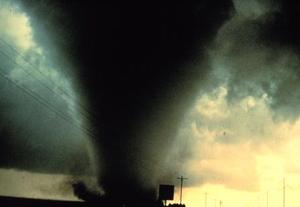Tornado predictionNew technologies help in tornado prediction
Scientists are working to increase tornado warning times. A new method, known as “warn-on forecasts,” will issue warnings based on forecasts rather than on observations. These warnings could increase the warning time to one -to-six hours before a tornado touches down. Another methodology being developed would give meteorologists the ability to tell people how strong the tornado will be before it hits the ground.

New tools move toward sufficient warning time // Source: uux.cn
Residents of Newcastle, Oklahoma had less than five minutes to prepare for a tornado after the first warnings went out on Monday. Residents in Moore, which was hit the hardest by the storm, had almost thirty minutes to find shelter before the tornado hit the city.
These warning times may appear short, but they are much longer than what was the norm ten or fifteen years ago. CNN reports that once a tornado hit the ground and meteorologists determine its path, the National Weather Service issued a “tornado emergency.”
“When you hear that, the response is that you better get your act together, now,” Harold Brooks, a research meteorologist at the National Oceanic & Atmospheric Administration’s Severe Storms Laboratory, told CNN.
The Severe Storms Laboratory can identify weather conducive to tornadoes seven to eight days before the storm hits, according to Brooks. Fifteen years ago a storm could only be identified a day before it hit.
. Computers used by weather services predict storms by using physics and mathematics. In addition, the grids the computers use have gotten smaller with the advancement of technology, which allows them to predict and track a storm’s movements over a greater distance.
“As computers have gotten more powerful, the models have gotten better,” Adam Sobel, a professor of atmospheric science at Columbia University in New York told CNN.
One problem that still hobbles predictions is the fact that tornados are still too small for the models to see. The National Oceanic and Atmospheric Administration is currently working with other organizations to increase warning times. A new method, called “warn-on forecasts,” will issue warnings based on forecasts rather than on observations. These warnings could increase the warning time to one -to-six hours before a tornado touches down.
Jeff Trapp, a professor of atmospheric science at Purdue University in Indiana, said he is optimistic about the new method, but that it is still in the developmental process.
Another methodology being developed would give meteorologists the ability to tell people how strong the tornado will be before it hits the ground, instead of after the damage is done, the way it is done today.
